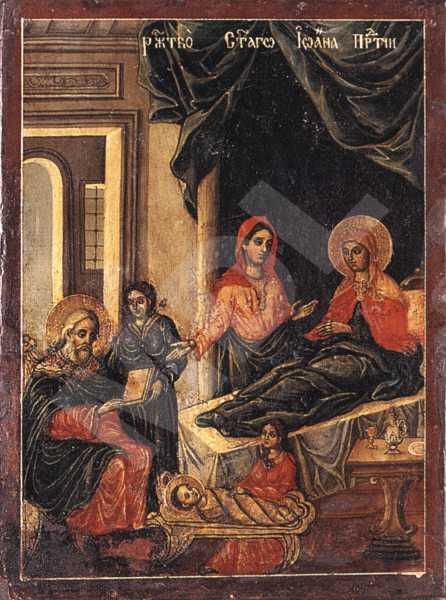The Nativity of St. John the Forerunner
Type:
Icon
Period:
The beginning of the
19 century
Toma Vishanov-Molera, born around 1750, painter of icons and murals, founder of the Bansko school of art. He grew up in the family of the clergyman Vishan. Around 1765 he went to Vienna, where he studied painting. It is not known who were his teachers there or when he returned to Bansko. His fellow villagers called him the Moler, Molera(from German Maler ‘painter’), whence the entire family's surname. Under the influence of the European 18th century art Toma Vishanov painted his works in a new manner, unknown until then in Orthodox art. The figures are realistic, vivid, expressive. Toma Vishanov is an innovator in the early period of Bulgarian Renaissance. His ideas on art were not understood and at first were rejected by his contemporaries. His work has not been studied extensively. He died after 1811 in Bansko.
Dimmensions (cm):
29
/ 22.6
/ 2.3
Location
Country: Bulgaria
Province: Blagoevgrad
Town: Bansko
Church: St. Trinity
Source
Country: Bulgaria
Province: Blagoevgrad
Town: Bansko
Church: St. Trinity
Object identification notes
Toma Vishanov-Molera (?)
Description
The iconography and the compositional solution of the theme are traditional. The composition is developed in several distances, Saint Elizabeth here being portrayed in the icon's right-hand side, on a plank-bed, resting on a pillow. Facing her and on his knees is the prophet Zacharias, holding a tablet with the inscription: "His name is John". In the icon's lower part a young woman is cradling the young John in a basket. The scene is painted against the background of an interior, depicting two rooms. The first one is obviously an antechamber, leading to the bigger one, wherein the figures are.
Iconographical technique: Tempera
The varnish cover is laid evenly and thinly.
Base material: Wood
The icon's base is a softwood panel. The ground coat is of plaster, thinly laid.
State, restoration traces and comments
There are no traces of any previous restoration work.


